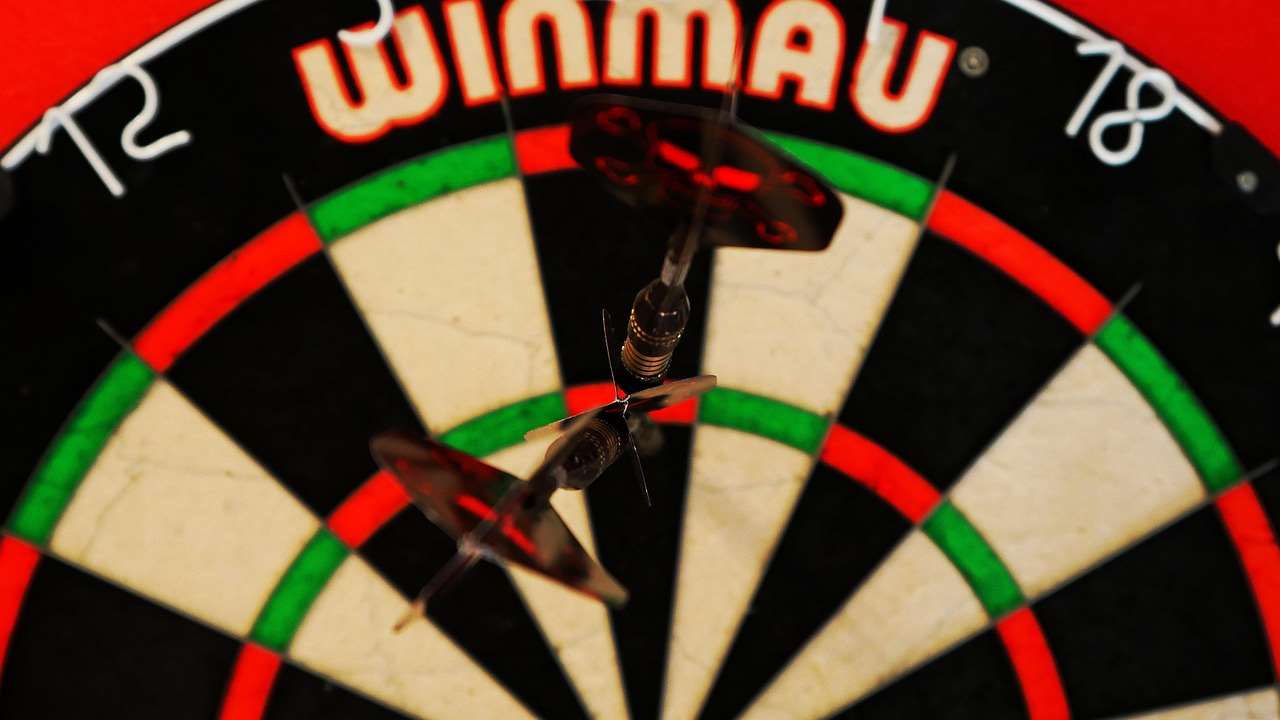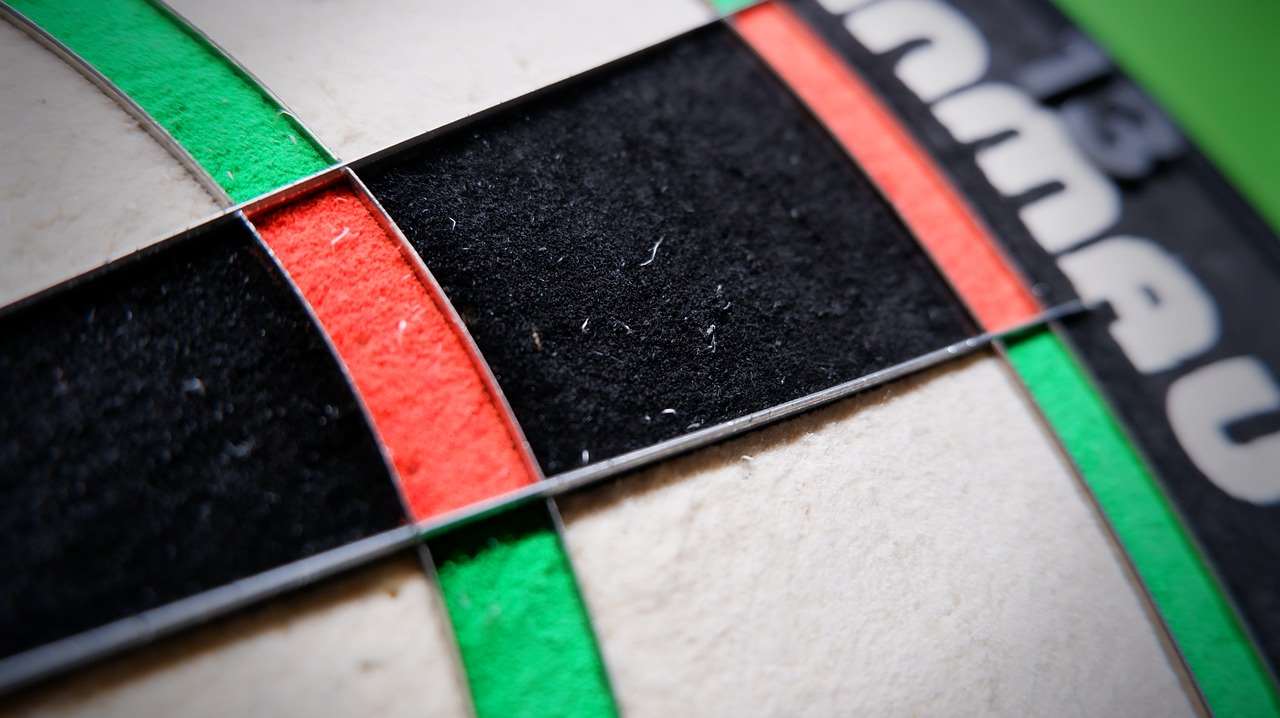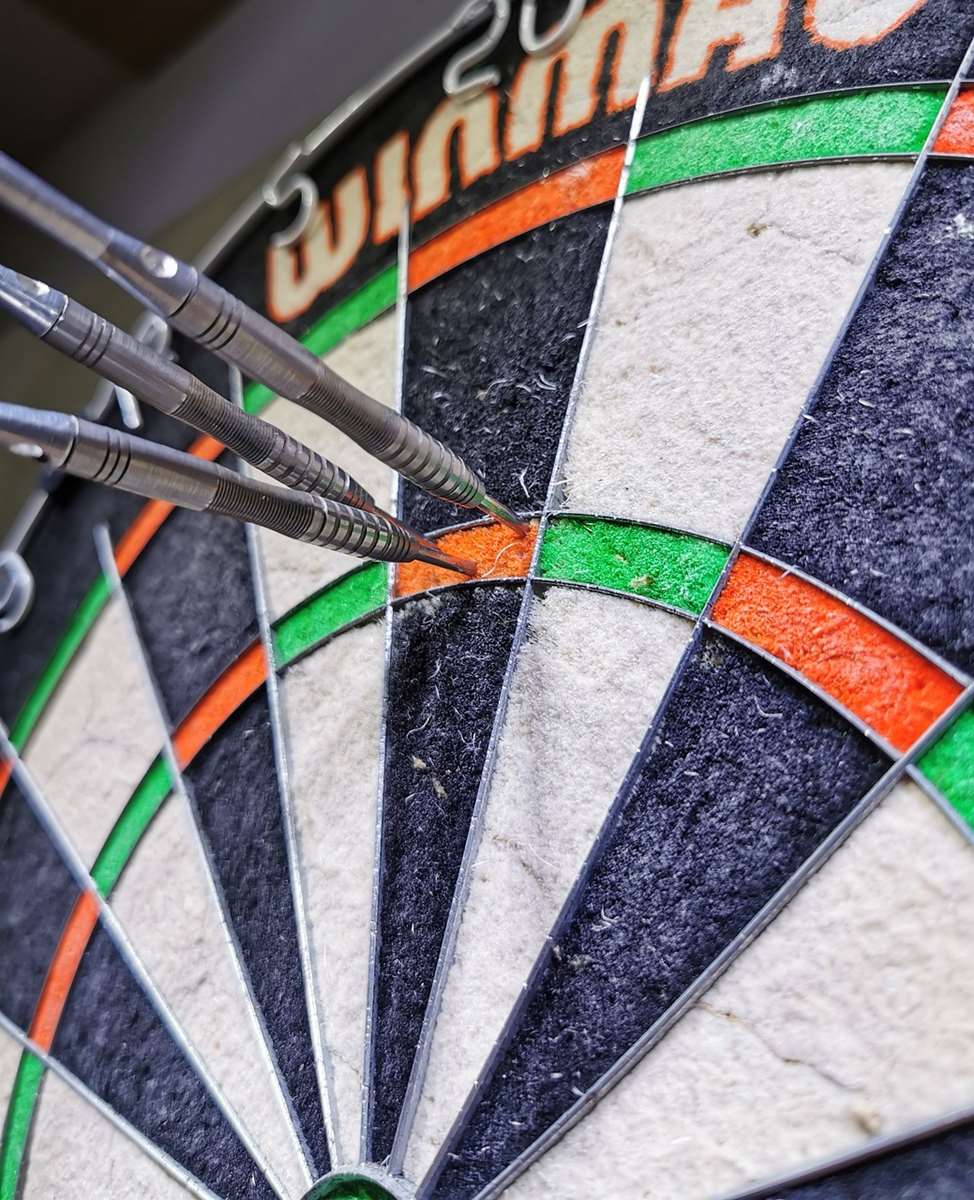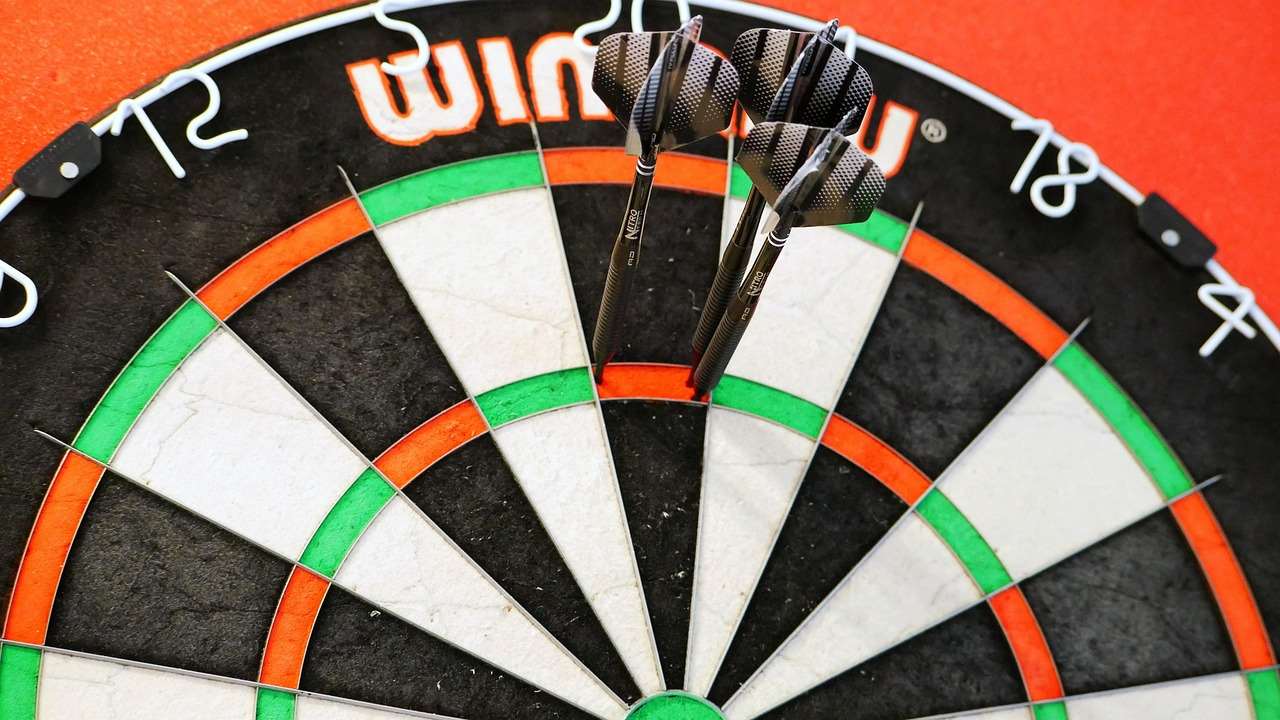Achieving a darts perfect score, also known as a 180, is the ultimate goal for many darts players, representing peak accuracy and skill. This article will guide you through understanding what a perfect score entails, how to achieve it, and tips for improving your overall game to increase your chances of hitting that coveted 180.
⚠️ Still Using Pen & Paper (or a Chalkboard)?! ⚠️
Step into the future! The Dart Counter App handles all the scoring, suggests checkouts, and tracks your stats automatically. It's easier than you think!
Try the Smart Dart Counter App FREE!Ready for an upgrade? Click above!

Understanding the Darts Perfect Score
A darts perfect score, often called a “180,” is achieved by throwing three darts into the treble 20 (T20) section of the dartboard. Each treble 20 scores 60 points (20 x 3), so three of them add up to 180. It’s a moment of pure skill and precision, and a significant accomplishment for any darts enthusiast. Achieving a 180 in a match is a huge boost of confidence and can often swing the momentum in your favour. Understanding the mechanics behind the throw and practicing consistently are key to reaching this milestone.
Why is the 180 so revered?
The 180 is more than just a high score; it represents mastery of the game. It demonstrates consistency, accuracy, and mental fortitude under pressure. Hitting a 180 can electrify the crowd and intimidate your opponent. Many professional players consider a 180 to be a turning point in a match, proving that they are performing at their peak. It’s a testament to countless hours of practice and dedication to the sport. You can visit Practice darts app with scoring for improving your skills.
Techniques to Improve Your Chances of Scoring a 180
While there’s no guaranteed formula for hitting a darts perfect score every time, focusing on these techniques will dramatically improve your chances:
- Stance: Adopt a consistent stance, typically sideways to the board, with your dominant foot forward. Find what feels comfortable and stable, allowing for a smooth throwing motion. Experiment with different foot positions to find the one that offers the best balance and control.
- Grip: Experiment with different grips to find one that feels natural and secure. A consistent grip is essential for consistent throws. Avoid gripping the dart too tightly, as this can lead to tension and inaccuracy. Consider factors like the weight and balance of your dart when choosing a grip.
- Throwing Motion: Develop a smooth, repeatable throwing motion. Focus on bringing the dart back in a straight line and releasing it at the same point each time. Avoid jerky movements or unnecessary wrist action. Practice your throwing motion in front of a mirror to identify and correct any inconsistencies.
- Follow Through: Ensure a complete follow-through after releasing the dart. This helps to maintain accuracy and consistency. Extend your arm fully towards the target, and hold your follow-through for a moment to ensure a clean release.
- Targeting: Focus intently on the treble 20 segment. Visualize the dart hitting the target before you throw. Use mental imagery to improve your focus and concentration. Consider aiming slightly above or below the center of the T20, depending on your throwing style.

The Mental Game and the Darts Perfect Score
Darts is as much a mental game as it is a physical one. Maintaining focus, managing pressure, and staying positive are crucial for achieving a darts perfect score. Learn to block out distractions and focus solely on your target. Develop mental strategies for dealing with pressure situations, such as taking deep breaths or visualizing success. Staying positive and confident, even after a missed shot, is essential for maintaining consistency. Consider the mental fortitude discussed in dartboard maths.
Equipment Matters: Choosing the Right Darts
The right equipment can significantly impact your performance. Experiment with different dart weights, barrel shapes, and dart shaft size to find what works best for you. A well-balanced dart that feels comfortable in your hand can improve your accuracy and consistency. Consider the material of the barrel (brass, tungsten, etc.) and how it affects the dart’s weight and grip. Regularly inspect your darts for wear and tear, and replace them as needed. Also, choosing the right what makes a good set of darts.
- Dart Weight: Darts typically range from 18 to 30 grams. Lighter darts may be easier to control, while heavier darts may offer more stability. Experiment to find the weight that suits your throwing style.
- Barrel Shape: Different barrel shapes (straight, torpedo, bomb) affect the dart’s balance and grip. Straight barrels are generally considered more forgiving, while torpedo barrels may be preferred by players who prefer a front-weighted dart.
- Shafts and Flights: The length and material of your shafts and flights can affect the dart’s trajectory and stability. Shorter shafts may provide more control, while longer shafts may offer more stability. Experiment with different combinations to find what works best for you. You can even find darts flights funny to add some personality to your game.

Common Mistakes to Avoid When Aiming for a Darts Perfect Score
Many players make common mistakes that hinder their progress. Being aware of these pitfalls and actively working to correct them can significantly improve your chances of achieving a darts perfect score.
- Inconsistent Stance: A stable and consistent stance is the foundation of a good throw. Avoid shifting your weight or changing your foot position during your throwing motion.
- Gripping Too Tightly: A tense grip can restrict your throwing motion and lead to inaccuracy. Relax your grip and allow the dart to flow naturally from your hand.
- Jerky Throwing Motion: A smooth, fluid throwing motion is essential for consistency. Avoid jerky movements or unnecessary wrist action.
- Lack of Follow-Through: A complete follow-through helps to maintain accuracy and consistency. Extend your arm fully towards the target and hold your follow-through for a moment.
- Poor Targeting: Lack of focus and concentration can lead to inaccurate throws. Focus intently on the treble 20 segment and visualize the dart hitting the target before you throw.
Practice Drills for Darts Perfect Score Improvement
Consistent practice is key to achieving a darts perfect score. Incorporate these drills into your practice routine to improve your accuracy and consistency:
- Treble 20 Focus: Spend dedicated practice time focusing solely on hitting the treble 20 segment. Aim for consistency over quantity. Set a target (e.g., hitting 5 out of 10 darts in the T20) and repeat until you achieve it.
- Around the Clock: Start at the number 1 and work your way around the board, hitting each number in order. This drill improves your overall accuracy and control.
- Doubles Practice: Doubles are crucial for finishing legs in darts. Practice hitting doubles to improve your finishing skills.
- Scoring Practice: Play regular games against yourself or others to simulate match conditions and improve your scoring ability.

Advanced Strategies for Achieving Consistent 180s
Once you have mastered the fundamentals, you can start to incorporate more advanced strategies into your game to increase your chances of hitting a darts perfect score.
- Visualisation Techniques: Before each throw, take a moment to visualize the dart hitting the treble 20. This can help to improve your focus and concentration.
- Mental Toughness Training: Practice staying calm and focused under pressure. Simulate match conditions in your practice sessions to prepare yourself for competitive situations.
- Analysis and Adjustment: Regularly analyze your performance to identify areas for improvement. Track your scores and identify patterns in your throws. Make adjustments to your technique or equipment as needed.
- Strategic Dart Placement: Don’t just blindly throw at the T20. Think about where your darts are landing and adjust your aim accordingly. If your first dart is slightly to the left, adjust your aim slightly to the right for the next two.
Analyzing Professional Darts Players and Their Darts Perfect Score Strategies
Studying the techniques and strategies of professional darts players can provide valuable insights into how to improve your own game and increase your chances of achieving a darts perfect score. Observe their stance, grip, throwing motion, and mental approach. Pay attention to how they handle pressure situations and adjust their strategy based on the game’s flow. You might even find inspiration in nine dart finish youtube videos.

Conclusion: Mastering the Darts Perfect Score
Achieving a darts perfect score requires dedication, practice, and a combination of physical skill and mental fortitude. By focusing on your stance, grip, throwing motion, and mental game, you can significantly improve your chances of hitting that coveted 180. Remember to practice consistently, analyze your performance, and stay positive. The journey to mastering darts is a continuous process of learning and improvement. Embrace the challenge and enjoy the satisfaction of seeing your hard work pay off. Now go out there, practice diligently, and start hitting those 180s! Explore other aspects of the game, such as the intricacies of bullseye dartboard template.
Hi, I’m Dieter, and I created Dartcounter (Dartcounterapp.com). My motivation wasn’t being a darts expert – quite the opposite! When I first started playing, I loved the game but found keeping accurate scores and tracking stats difficult and distracting.
I figured I couldn’t be the only one struggling with this. So, I decided to build a solution: an easy-to-use application that everyone, no matter their experience level, could use to manage scoring effortlessly.
My goal for Dartcounter was simple: let the app handle the numbers – the scoring, the averages, the stats, even checkout suggestions – so players could focus purely on their throw and enjoying the game. It began as a way to solve my own beginner’s problem, and I’m thrilled it has grown into a helpful tool for the wider darts community.